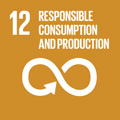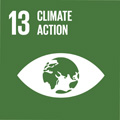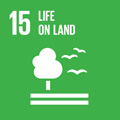- Docente: Gloria Falsone
- Credits: 3
- SSD: AGR/14
- Language: Italian
- Teaching Mode: In-person learning (entirely or partially)
- Campus: Bologna
- Corso: First cycle degree programme (L) in Ornamental plants and landscape protection (cod. 8523)
Learning outcomes
At the end of the course, the student acquires the basic knowledge of the soil formation, factors of pedogenesis and world distribution of soils, with special focus on the climate-rock-biota system. The student will be able to: recognise the main types of soil and the features of soil surface horizons by field and analytical tools; evaluate the degree of soil development in the different environmental contexts; understand the relation soil-landscape.
Course contents
Prerequisites
The student who accesses this teaching is in possession of a good preparation in the fundamentals of mathematics, chemistry and plant biology. These prerequisites are provided by the teachings of the first year of the degree.
Theoretical content of the teaching unit (total teaching unit: 21 hours)
1. Basic concepts
The soil, factors of pedogenesis, formation and evolution of soil, state factors and factorial Jenny's model, pedofunction and pedosequence
2. Factors of pedogenesis: climate
temperature and precipitation, thermo-pluviometric coefficients and diagrams, soil moisture and soil temperature regimes
3. Factors of pedogenesis: soil parent material
classification of soil minerals and parent materials, physical and chemical weathering, intensity of rock transformation, rocks chemistry and its effects on soil
4. Factors of pedogenesis: biota
Soil biomass, soil organic matter and its transformations, classification of humus and its ecological significance, formation of surface horizons
5. Pedogenetic processes
Soil evolution and state of soil, processes of transformation of material within soil, translocation within soil, addition to soil and loss from soil, environmental contexts and main pedogenetic processes
6. Main soil types and their distribution
Main soil types properties according to the international soil classification systems and their worldwide and national distribution
The student will acquire skills related to the knowledge of the role and effect of the main factors of pedogenesis on soil, main processes of soil formation, and main properties of different soil types, in order to understand the relation between landscape and soil evolution
Practical content of the teaching unit (total teaching unit 9 hours)
The practical exercises are: determination of the main soil characterists (laboratory exercises: texture, soil pH, carbonate, soil organic matter, etc. etc.) and soil description (field exercises). The laboratory and field activities will allow a fast transfer of knowledge presented in class into practical applications necessary for understanding soil-landscape units. The practical exercises will be in collaboration with Chimica Agraria.
Readings/Bibliography
Fundamental will be the use of material provided by the teacher (available on Insegnamenti OnLine) and lecture notes.
- G. Certini, F.C. Ugolini. Basi di Pedologia, Edagricole, Bologna 2010. Chapters 1, 2, 3, 4, 5, 6 and 7 (Ch. 7 only the paragraphs concern on the moisture and temperature soil regimes)
- C. Dazzi. Fondamenti di Pedologia. Le Penseur, 2013. Chapters 1, 2, 3, 4, 5, 6, 7, 10, 11 (Ch. 11 only the paragraphs concern on the moisture and temperature soil regimes), and 13Teaching methods
The course consists of lectures and practical exercises in the laboratory and in the field (in attendance and/or distance). The slides of lectures will be available on Insegnamenti OnLine.
Assessment methods
The course is part of the integrated corse "Chimica Agraria con Elementi di Geopedologia". Therefore, the final oral examination will assess the level of knowledge and skills acquired by the student concerning the contents of lectures of the 3 teachings (soil chemistry, biochemistry and geopedology). Students who have earned at least 18/30 for each teaching will be positively evaluated and the final grade will be the mean value of all teaching grades. The duration or the oral test will be an average of 45 minutes
Teaching tools
Computer, webcam, projector, Power-point presentations, communication and collaboration platforms (e.g., TEAMS), e-learning platforms (e.g., Kahoot), tools for field and lab activities
Office hours
See the website of Gloria Falsone
SDGs




This teaching activity contributes to the achievement of the Sustainable Development Goals of the UN 2030 Agenda.
